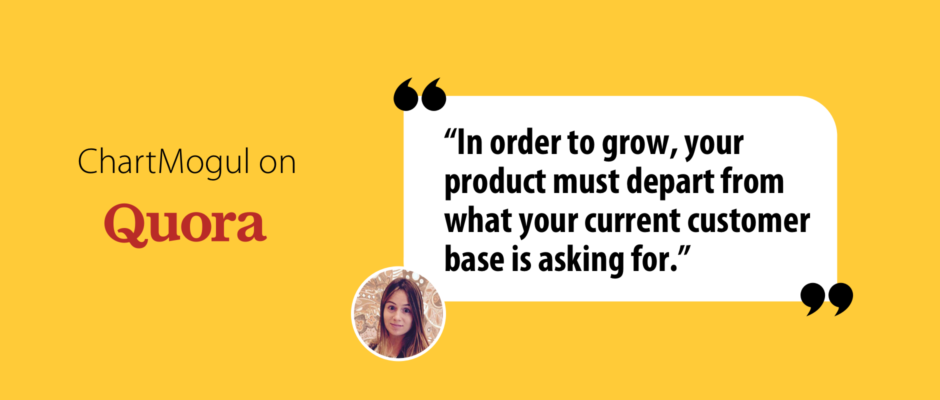When it comes to building a product roadmap, there are many valid, and sometimes competing, theories of how to best prioritize product features. The fact is that there’s no one-size-fits-all “best way” to approach a product roadmap.
Key tips from the general consensus:
- Crystallize your company’s objectives to set the stage for feature prioritization: Are you looking to retain customers, expand current business, grow your initial customer base, or diversify?
- Always pay close attention to customer requests, but find out why they’re requesting it. Understand the need behind the ask, so that you can devise a better solution.
- Weigh cost versus impact.
But not much attention has been given to the other half of the product development question: how to build a product roadmap.
To provide the best answer, I asked ChartMogul’s Director of Product, Vinay Seshadri, what perspective he would give for SaaS product roadmaps. He broke his advice down into a story of your company, from early stage to growth to scale, explaining how product objectives and approaches change along the way. I found it very enlightening!

Early Stage: What the customer wants
Objective = Reach Product Market Fit
“Focus mainly on what the customer wants, but always debate how.”
“Debating how” is key; that’s the expertise of the product team. It echoes ProdPad’s advice that your approach should be “a promise to solve a problem, not to build features.” They suggest basing your product roadmap around themes, not around features. Feature requests are constrained ideas; themes are open and full of possibility. When you organize by theme, then you can cluster various requests together and devise a single, comprehensive (and more elegant) solution for the customer.
“However, in the early stage, speed usually wins the ‘how’ question.”
You want to move fast, so the quickest feasible solution to a problem or need will often take priority.
Important to note: As long as your customer churn is high, you have not reached PMF. So you should continue to double down on your current offering before you switch up your product prioritization strategy.
Growth Stage: What the company wants
Objective = Expand to new markets
“Once you have PMF for one market segment, you need to step back and look at strategic direction. Here company goals start playing a role in feature prioritization for roadmapping. These features don’t always overlap with what your initial market wants.”
At this stage, you will start to depart from what your current customer base is asking for. It might feel counter-intuitive, or even irresponsible, but it’s absolutely necessary if you want to grow. And as long as churn from your initial market is not high, you can afford to prioritize more and more features that meet company growth goals, rather than features customers are asking for.
“Typically early stage will force you to go down deep in one vertical. But in growth stage, more often than not, higher revenues and growth can only be achieved by diversifying your offering horizontally.”
So, instead of focusing on initial market, you will expand to solve the problems of desired markets.
At or Approaching Scale Stage: What engineering wants
Objective = Manage technical debt
“Unless you’re a dead simple product (which could be a serious competitive flaw), technical debt will keep growing, as you’ve been prioritizing speed over everything else.”
This technical debt starts raising your cost of development, so the third stage is about handling and whittling down this debt.
Then what?
“After these three stages, each dominated by a different objective (what the customer wants, what the company wants, what engineering wants), you hopefully have a stable product that both meets the needs of several market segments and also is cost effective to maintain and extend. From there, product roadmaps will likely include a fair share of all three types of features to continue on a sustainable and stable product development cycle.”
The folks over at This Is Product Management have written some useful guidance on building a product roadmap.
If you’re curious to hear more of what Vinay has to say about product management for SaaS, check out this podcast interview. The conversation covers:
- How to define Product Management and how the role fits into a SaaS business
- What companies should look for in their first product hire
- The challenges (and benefits) that the SaaS model imposes on product development
- Useful tools and processes for product managers
- The most important metric for Product Management
- How to maintain sharp focus in the face of multiple feature requests
https://soundcloud.com/chartmogul/saas-open-mic-vinay-seshadri-director-product-chartmogul#t=0:00
This answer was originally published on Quora. View the original thread here: In a B2B SaaS startup, what is the best way to prioritize product features and build a product roadmap?
